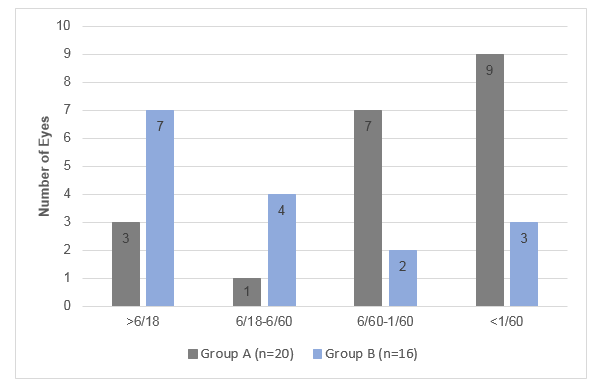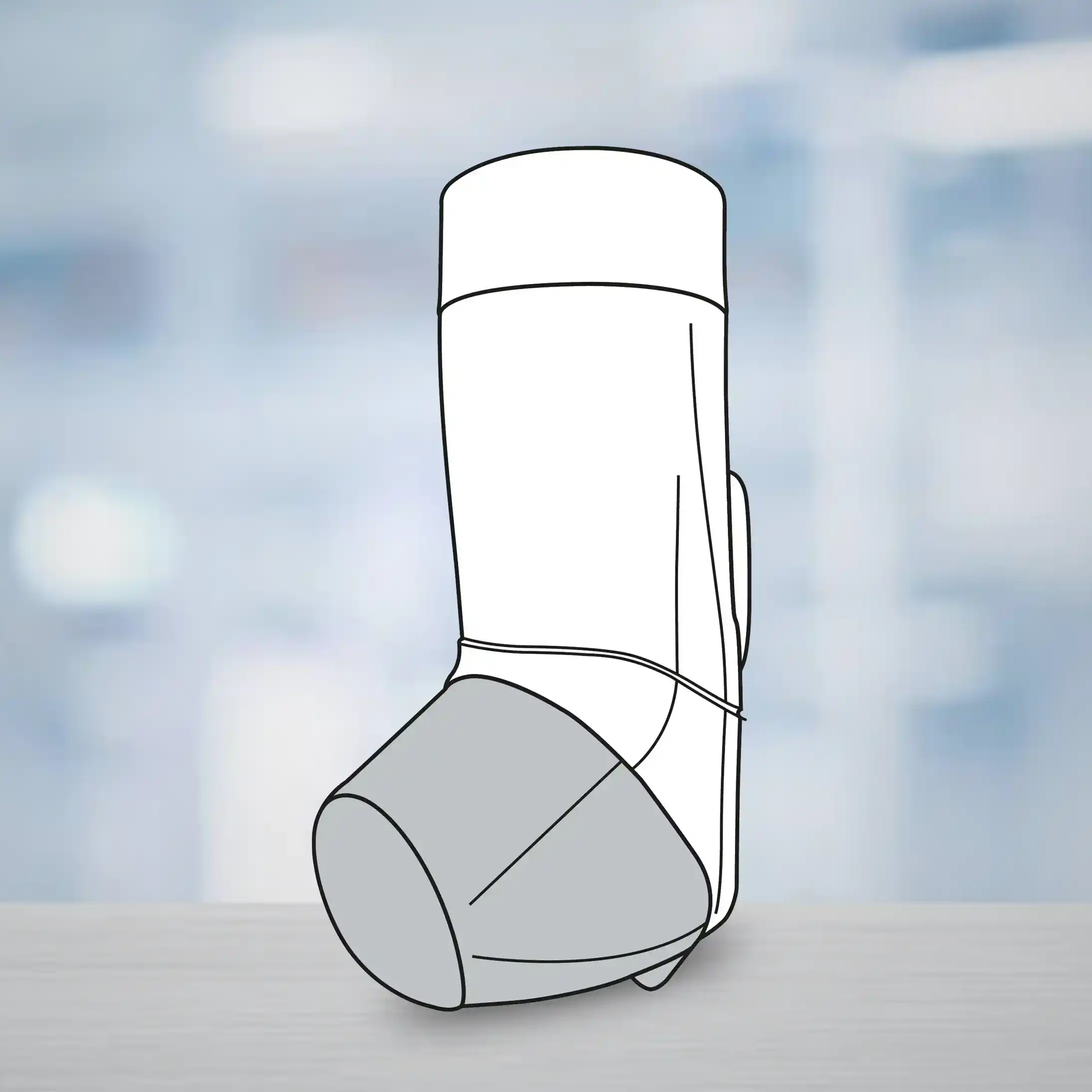Introduction
The use of intracameral (IC) antibiotics has a pivotal role in the prophylaxis of post-cataract surgery endophthalmitis (PCE). Despite the advances in sterilization procedures, the incidence of PCE remains substantially high, particularly, in centres with high surgery rates. Retrospective studies in India have demonstrated the effectiveness of IC moxifloxacin in reducing the incidence of PCE. Nevertheless, little is known about the outcomes in patients with variable clinical profile and diverse management strategies for PCE prophylaxis.
Aim
- To estimate the incidence of PCE with and without prophylactic IC moxifloxacin
- To determine the difference in the patient profile, surgical technique, and the visual outcomes in the patients developing PCE
Patient Profile
- Rural population with age-related cataract, undergoing cataract surgery at a tertiary care centre (private and subsidized patients) in Central India
- The study population was categorized as follows:
- Group A: Patients operated for cataract surgery between June 2013 and May 2014 without peri-operative IC moxifloxacin prophylaxis (since the centre had begun the use of prophylactic IC moxifloxacin since 2014)
- Group B: Patients operated from June 2015 to May 2016 and receiving IC moxifloxacin prophylaxis
Methods
Study Design
- A single-centre, retrospective, comparative, observational study
Treatment Strategy
- All the surgeries were performed under local anaesthesia with appropriate use of povidone-iodine
- At the end of the surgery, 0.1 ml of topical ophthalmic solution containing 0.5% w/v of moxifloxacin was injected intracamerally in eyes of group B patients
- The cataract surgeries were performed either by temporal clear corneal phacoemulsification (PE) or superior manual small incision cataract surgery (MSICS)
- Post-operative treatment comprised of a topical steroid–antibiotic combination (Ofloxacin 0.3% and Prednisolone 1%) eye drops six times in the first week followed by four times in the consecutive week, along with oral Ciprofloxacin (500 mg) twice a day for the first three post-operative days.
Outcomes
- The incidence of PCE
Results
- A total of 101,815 cataract surgeries were performed in group A and 112,967 in group B. The follow-up rate for patients in group A and group B during the study period was comparable (74.26% vs 73.55%).
- With regards to the baseline demographics, none of the variables except patient age differed statistically between the two study groups.
- The incidence of PCE was 0.18% (179 eyes) in group A and 0.08% (92 eyes) in group B (p<0.001). Amongst group A patients, those treated privately vs those from subsidised category had a greater reduction in risk of PCE (p<0.001); but the same did not differ significantly in group B patients (p=0.558) (Fig; 1).
Group A: Without intracameral moxifloxacin prophylaxis
Group B: With intracameral moxifloxacin prophylaxis
- Mean post-operative day of presentation for PCE did not differ statistically between group A vs B (14 vs 7; p=0.132). Majority of the PCE patients presented with acute endophthalmitis in groups A and B (88% vs 90%).
- The reduction in the incidence of PCE was significant in patients treated with PE as well as with M-SICS with no significant differences in group A and B.
- The presenting and final corrected distance visual acuity (CDVA) was significantly better in eyes receiving moxifloxacin prophylaxis (Table 1).
|
|
Group A |
Group B |
P value |
|
Presenting CDVA (LogMAR) (Mean) |
2.15 |
1.82 |
0.028 |
|
Final CDVA (LogMAR) (Mean) |
1.51 |
1.22 |
0.034 |
Group A: Without intracameral moxifloxacin prophylaxis
Group B: With intracameral moxifloxacin prophylaxis
- The gain in vision and final CDVA attained post-treatment was significantly higher in group B patients (Fig. 1).
CDVA: Corrected distance visual acuity
Group A: Without intracameral moxifloxacin prophylaxis
Group B: With intracameral moxifloxacin prophylaxis
Conclusions
- Use of prophylactic IC moxifloxacin reduced the incidence of PCE and helped patients achieve significantly better visual acuity in an Indian tertiary clinic.
- The use of IC moxifloxacin appears to be a prudent prophylactic measure to cut down the burden of PCE in a community-based ophthalmology set-up.
Int Ophthalmol. 5 Apr, 2021 (Published Online); DOI: 10.1007/s10792-021-01830-0.

.svg?iar=0&updated=20230109065058&hash=B8F025B8AA9A24E727DBB30EAED272C8)









